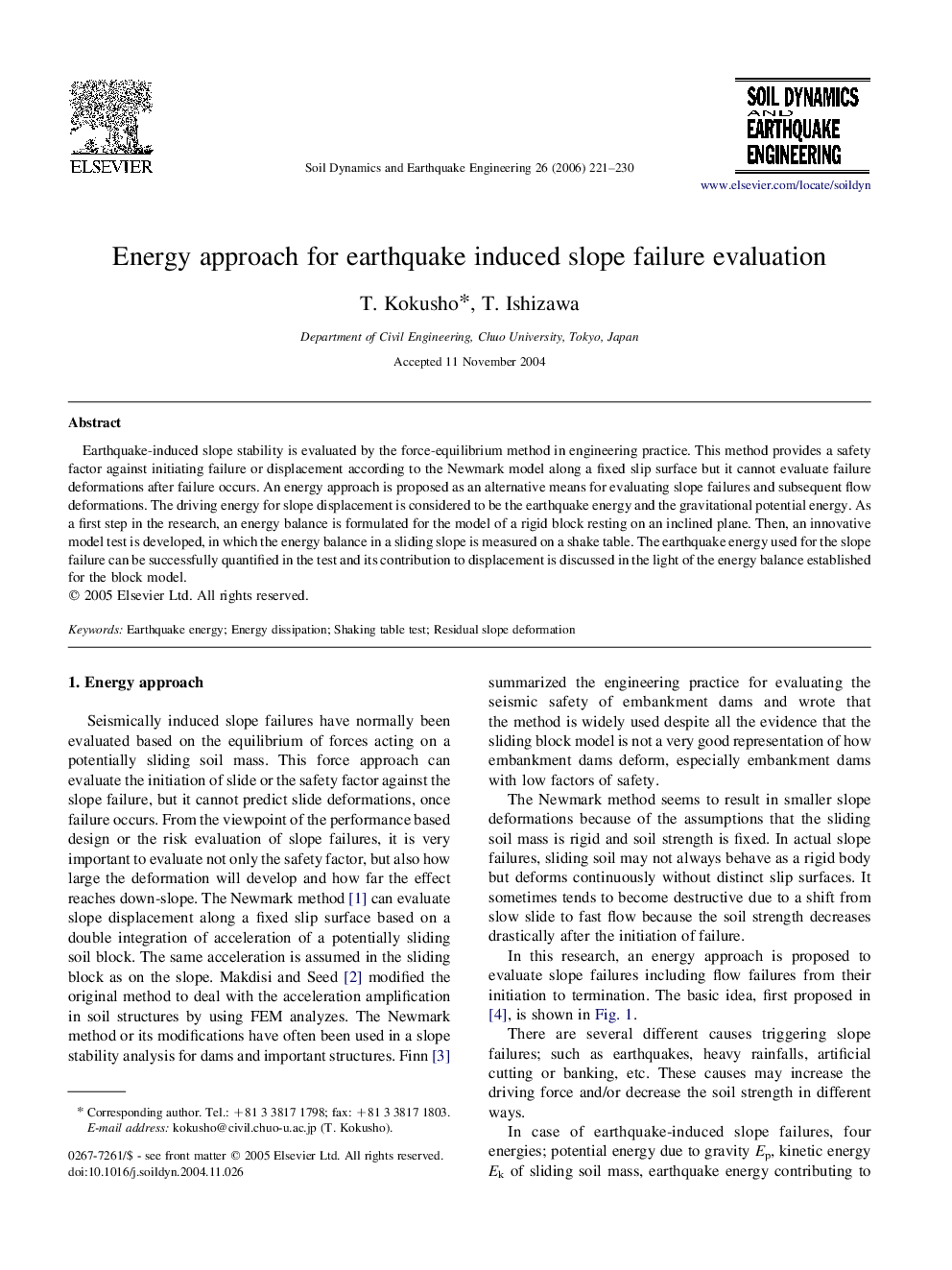| Article ID | Journal | Published Year | Pages | File Type |
|---|---|---|---|---|
| 305309 | Soil Dynamics and Earthquake Engineering | 2006 | 10 Pages |
Earthquake-induced slope stability is evaluated by the force-equilibrium method in engineering practice. This method provides a safety factor against initiating failure or displacement according to the Newmark model along a fixed slip surface but it cannot evaluate failure deformations after failure occurs. An energy approach is proposed as an alternative means for evaluating slope failures and subsequent flow deformations. The driving energy for slope displacement is considered to be the earthquake energy and the gravitational potential energy. As a first step in the research, an energy balance is formulated for the model of a rigid block resting on an inclined plane. Then, an innovative model test is developed, in which the energy balance in a sliding slope is measured on a shake table. The earthquake energy used for the slope failure can be successfully quantified in the test and its contribution to displacement is discussed in the light of the energy balance established for the block model.
